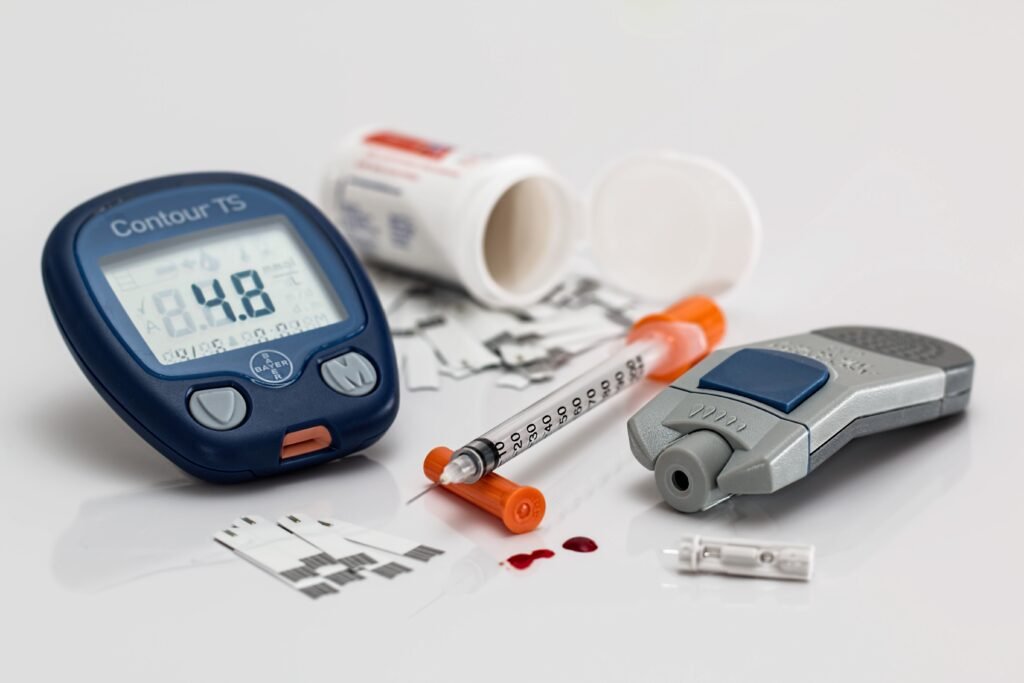Diabetes is often seen as an adult health issue, but it’s increasingly affecting children around the world. Type 1 diabetes is one of the most common chronic conditions in children, and Type 2 diabetes is now rising in younger populations due to changes in lifestyle and diet.
For parents, caregivers, and families, recognizing the signs early and building strong support systems is key to helping a child live a healthy, balanced life with diabetes.
In this post, we’ll explore the early signs of diabetes in children, available treatments, and how families can offer the right support.
Types of Diabetes in Children
1. Type 1 Diabetes
- An autoimmune condition where the body’s immune system attacks insulin-producing cells in the pancreas.
- Children with Type 1 diabetes require insulin therapy for life.
2. Type 2 Diabetes
- Often linked to genetics, obesity, and sedentary lifestyles.
- The body becomes resistant to insulin or doesn’t produce enough.
- Can often be managed with lifestyle changes, but sometimes requires medication.
Early Signs of Diabetes in Children
Recognizing the symptoms early can prevent serious complications like diabetic ketoacidosis (DKA), which can be life-threatening if untreated.
Common Warning Signs:
- Frequent urination (especially noticeable at night or bedwetting)
- Extreme thirst
- Unexplained weight loss
- Increased hunger
- Fatigue and low energy
- Blurry vision
- Yeast infections in girls or diaper rashes in infants that don’t heal easily
- Irritability or mood changes
If you notice these symptoms, consult a pediatrician immediately for blood sugar testing.

Treatment Options for Children with Diabetes
1. Insulin Therapy (Type 1 Diabetes)
Children with Type 1 diabetes require:
- Daily insulin injections or the use of an insulin pump.
- Multiple blood sugar checks each day or continuous glucose monitoring (CGM).
2. Medications (Type 2 Diabetes)
- May include oral medications like Metformin.
- Some children may eventually need insulin.
3. Lifestyle Changes
- Balanced, carbohydrate-conscious diet.
- Regular physical activity.
- Maintaining a healthy weight.
4. Ongoing Blood Sugar Monitoring
- Frequent monitoring is critical to keep levels within the target range and prevent highs and lows.
How Families Can Support a Child with Diabetes
1. Learn Together
- Educate yourself and your child about diabetes management, including insulin use, carb counting, and recognizing low blood sugar.
- Attend diabetes education programs or work with a pediatric diabetes team.
2. Create a Supportive Home Environment
- Encourage open conversations about diabetes.
- Avoid making the child feel different or restricted.
- Include the whole family in healthy eating and physical activities to make the child feel supported.
3. Establish Routines
- Consistent meal times, medication schedules, and regular blood sugar checks help children feel more secure and in control.
4. Communicate with Schools
- Inform teachers, school nurses, and coaches about the child’s condition.
- Provide emergency supplies (like glucose tablets) at school.
- Create a written diabetes care plan for school staff to follow.
5. Support Emotional Health
- Living with diabetes can sometimes make children feel isolated or frustrated.
- Watch for signs of anxiety, depression, or burnout.
- Consider diabetes support groups or counseling tailored for children.
Helping Children Build Independence
As children grow, they need to develop the skills to manage their diabetes more independently.
- Involve them in daily decisions like meal planning and insulin dosing (as appropriate for their age).
- Teach them to recognize how their body feels when blood sugar is too high or low.
- Encourage self-monitoring and gradual responsibility with supervision.
A diabetes diagnosis can be overwhelming for families, but with the right tools, education, and emotional support, children can live full, active, and happy lives.
The key is working together as a family, empowering the child to develop healthy habits, and fostering a positive, supportive environment both at home and at school.
Early recognition, consistent care, and open communication can make all the difference in helping a child thrive with diabetes.


































